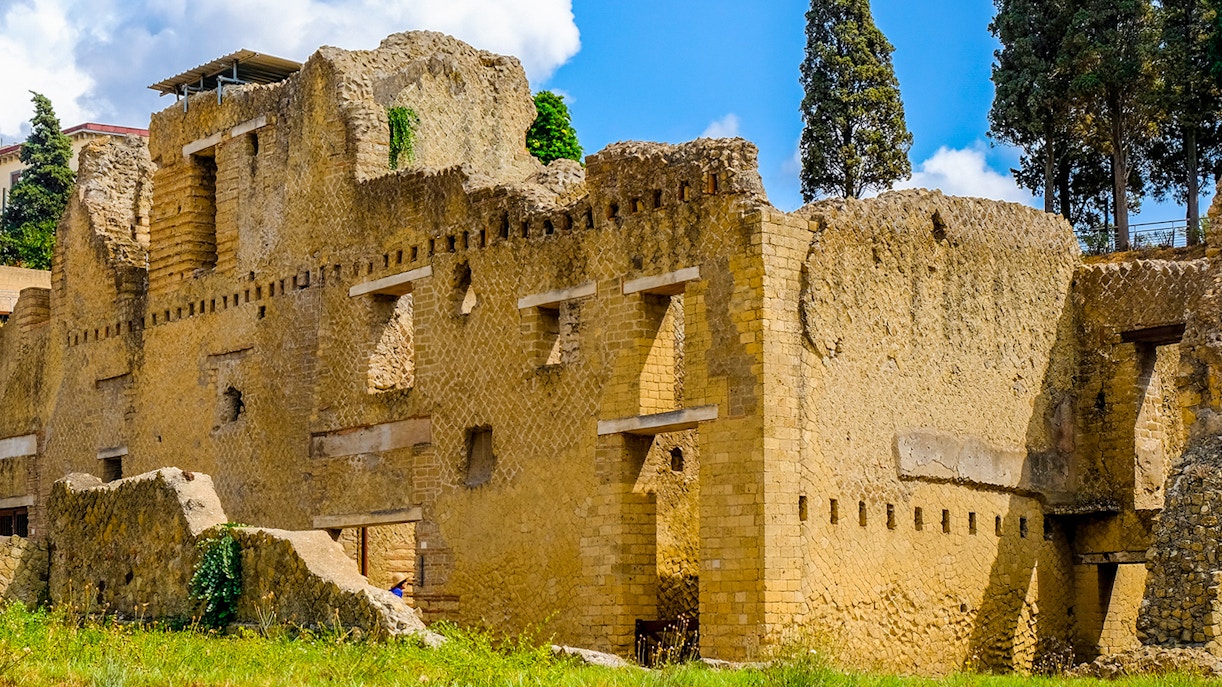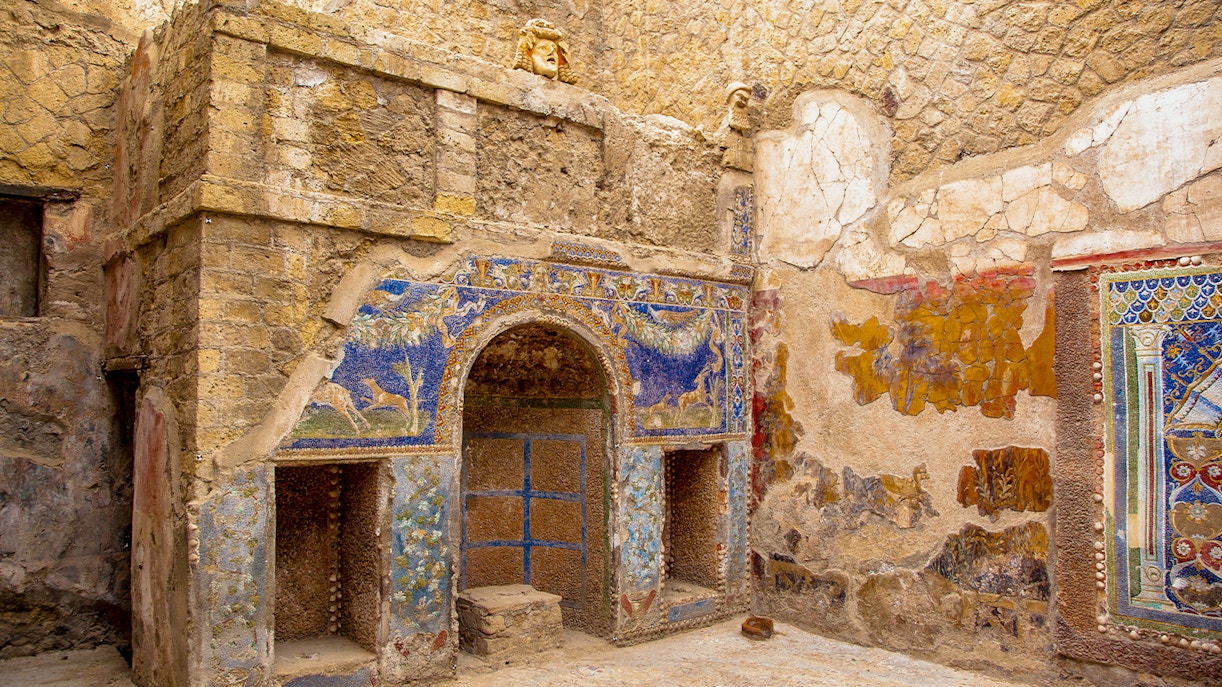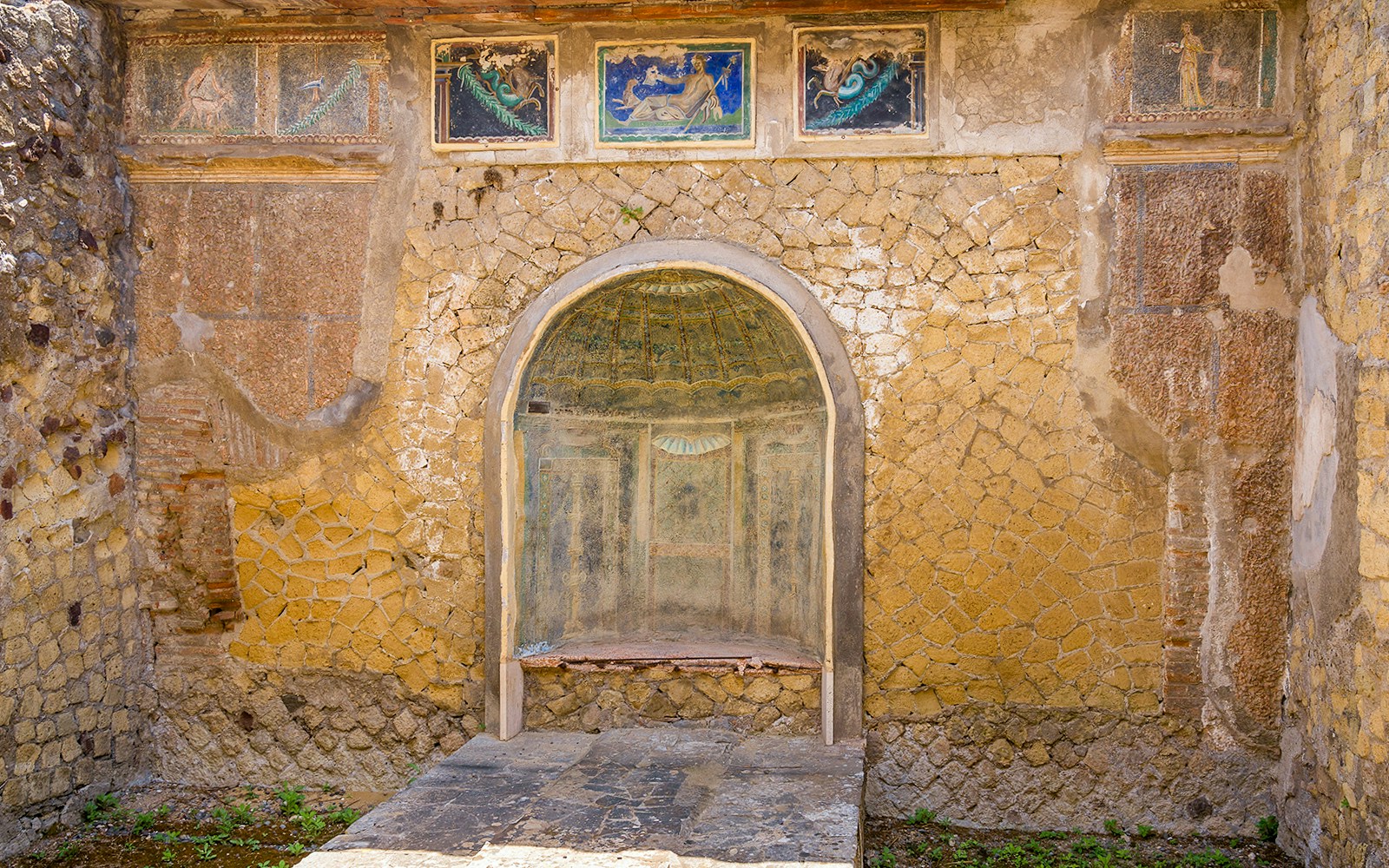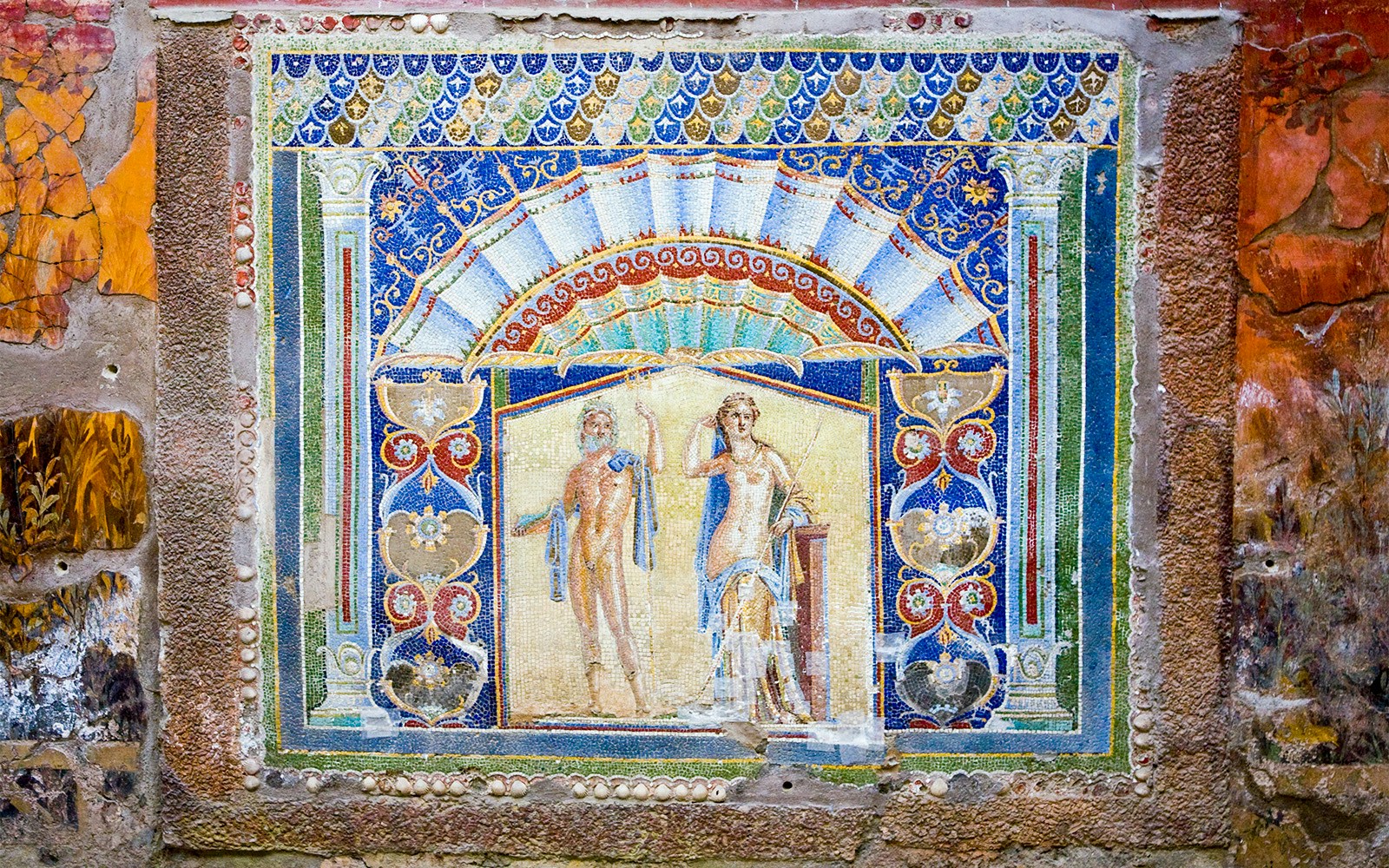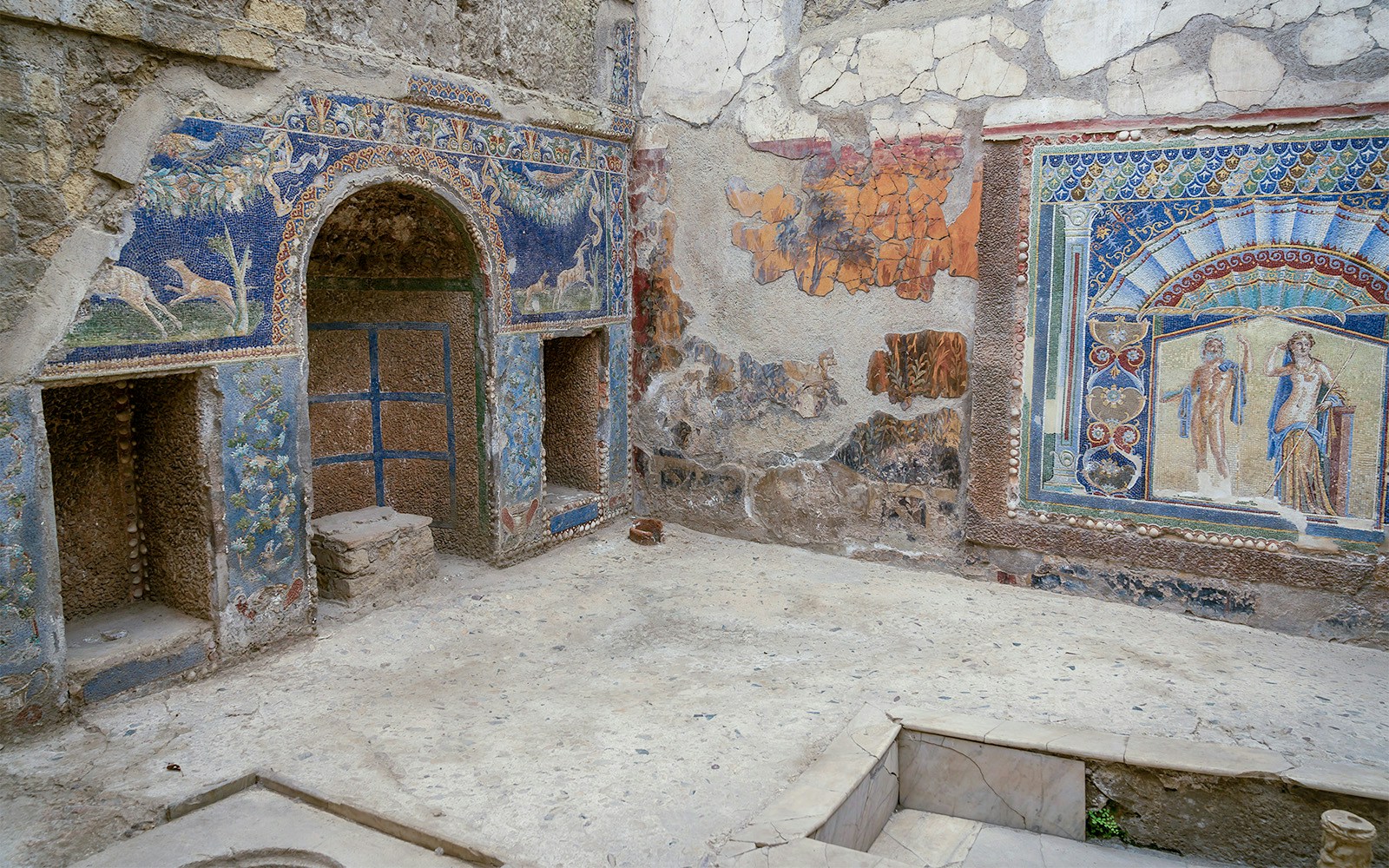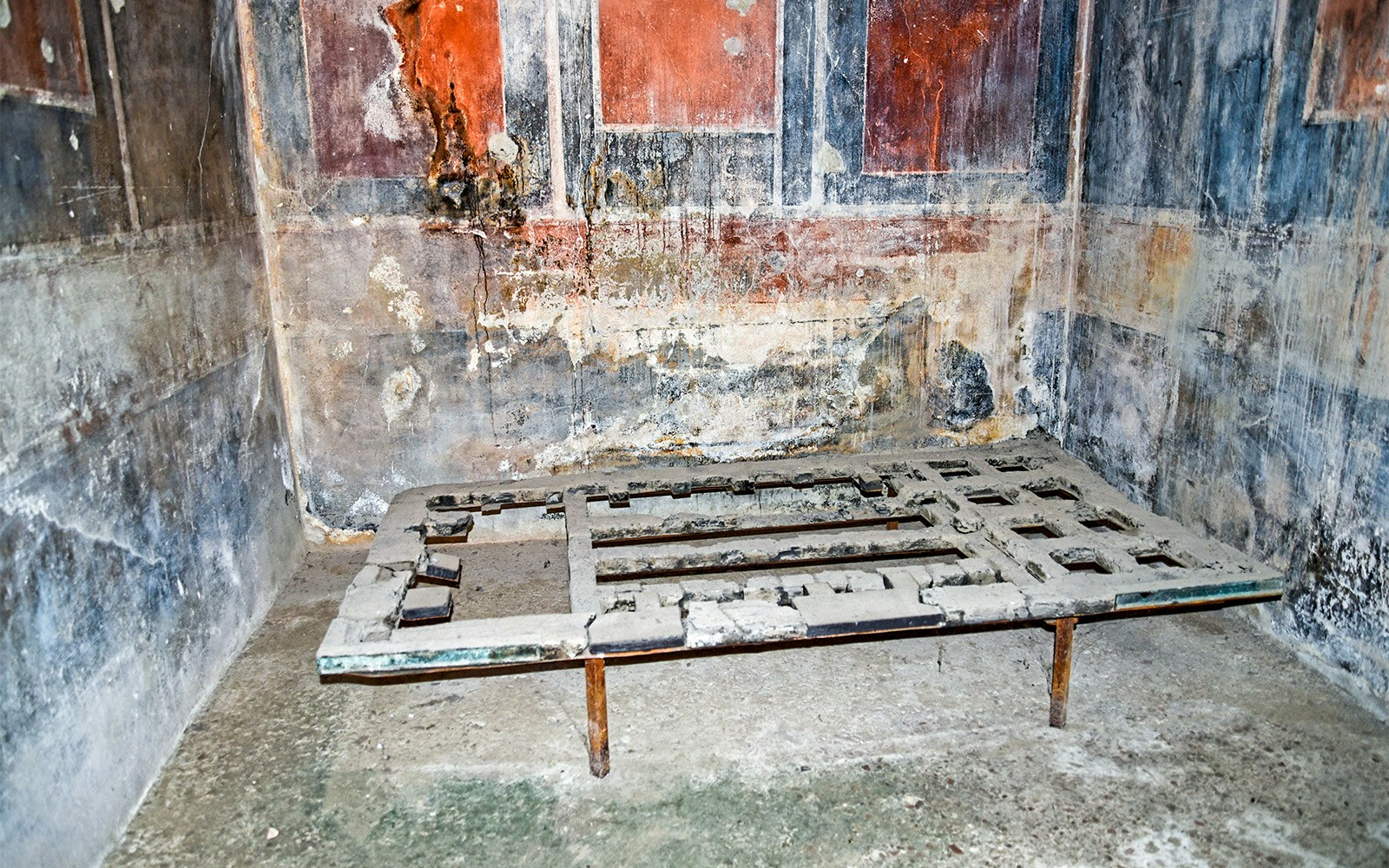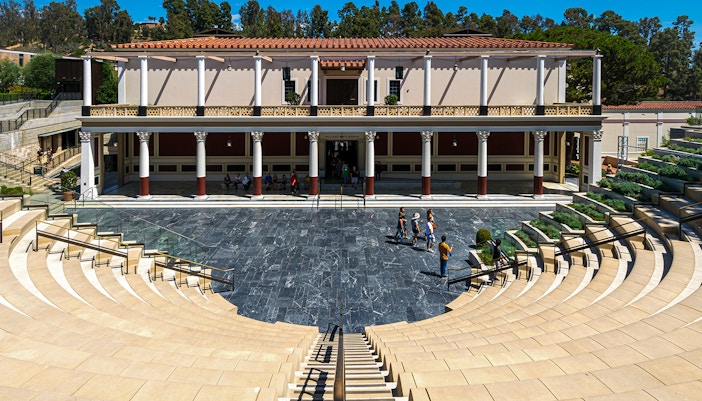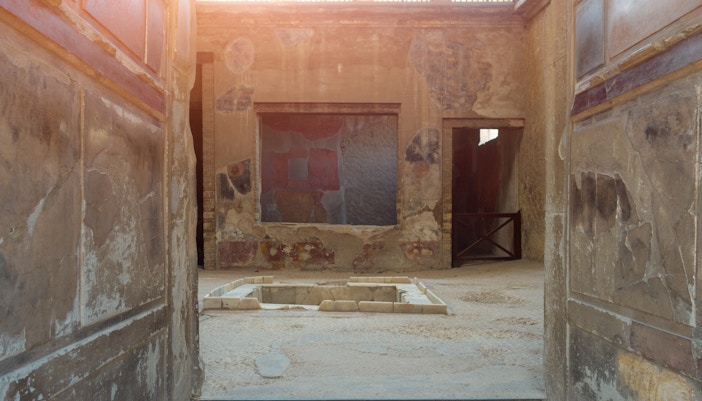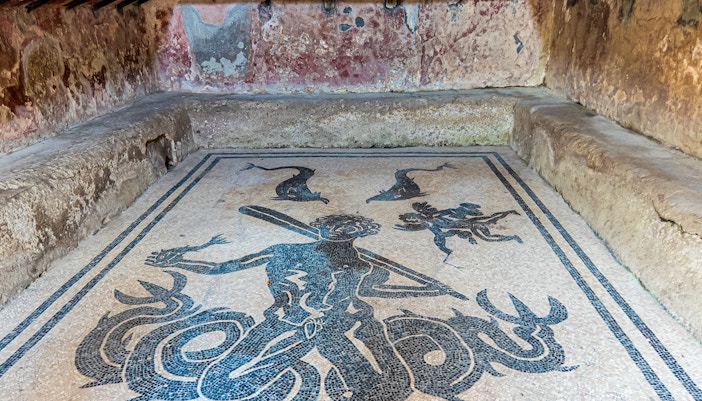The very end of the house features an open-topped courtyard with an artificial grotto and a fountain, or Nymphaeum. The entire courtyard features garden paintings. Later, when an aqueduct was introduced, they redirected it to a cistern in the courtyard. This cistern was also decorated with blue mosaic chips. The courtyard is positioned in such a way that a visitor has a clear and direct view of it even before entering the house. The owner wanted to give the impression of a courtyard-cum garden in the limited space available, so there are frescoes within that depict flowering plants and fountains.
